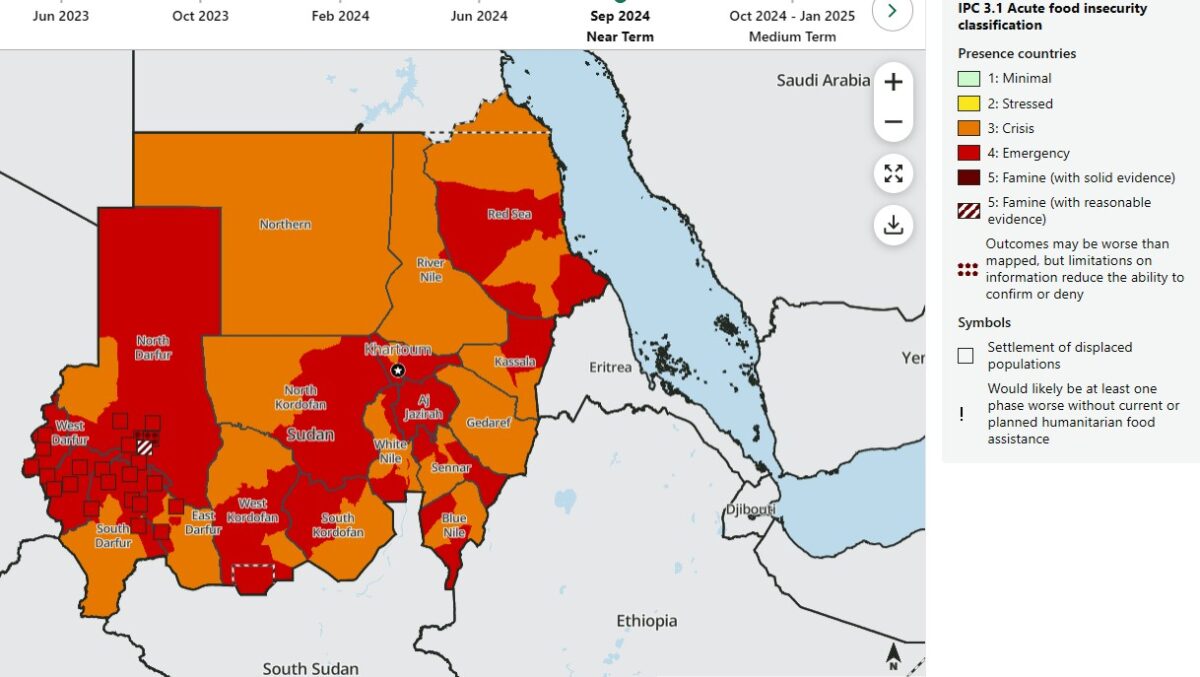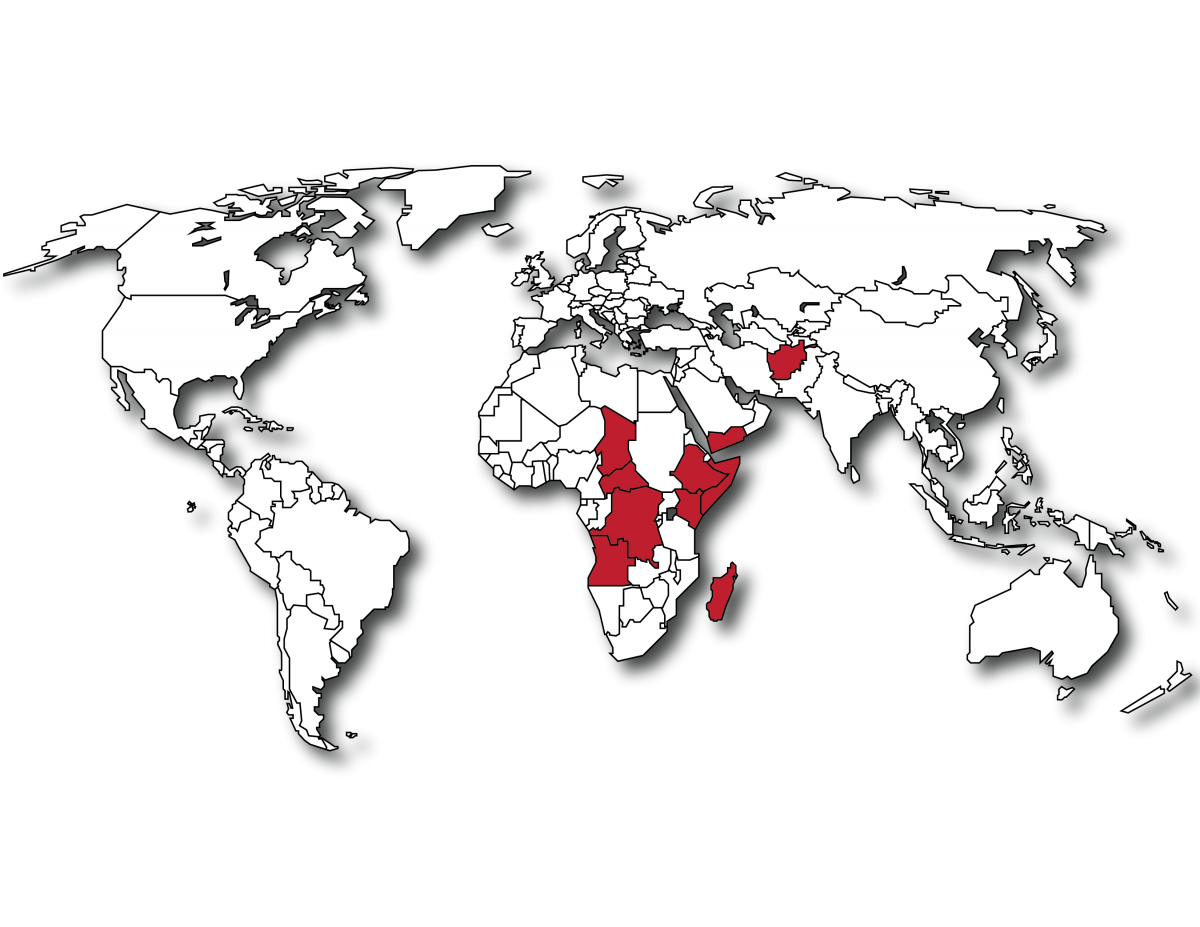The program which many experts considered to be the most effective at stopping famines and starvation and arguably the single most valuable aid program of all time, has ended its 40 year run of success, as the White House shut it down, alongside hundreds of other global initiatives, without review, discussion or debate. The “Famine Early Warning System” aka “FEWS” was created to address the longstanding problem that U.S. food aid, which takes months to plan, procure and ship across oceans, kept arriving too late to save lives where there was famine.
FEWS has prevented the deaths of an estimated 10 million children from famine during its tenure. FEWS played an important role in the decline in famine deaths seen in the last century.
The United States Agency for International Development (USAID) created FEWS following the late famine relief efforts of the mid 1980s when famine hit Ethiopia, Sudan and the Sahel. In those famines, US food aid saved many lives, but could have saved more, and prevented mass forced migration (the uprooting of refugees) if food aid had reached those in need at earlier stages of crisis. The President of Tufts University (in Massachusetts), Dr. Jean Mayer, a nutritionist, proposed a new famine early warning initiative to the head of USAID at the time, and the new program was born. In the decades since, US food aid became dramatically more effective at addressing emergency food needs in a timely way, in the process saving millions of lives.
From its inception, FEWS cleverly combined data from a range of different sources about local crop production in countries from Somalia to Mali, from Afghanistan to Haiti. FEWS obtained and compared data from satellite imagery of fields under cultivation, ground visitations, rainfall, local retail prices, surveys of malnutrition, and distress sales by households (an early indicator of intention to migrate). Its methods elegantly blended insights from markets, biology, climate, and remote sensing. FEWS brought together contributions from other parts of the government: including NASA, U.S. Geological Survey (USGS), NOAA, and the U.S. Department of Agriculture. Various universities including the University of California/Santa Barbara and the University of Maryland also provided critical satellite monitoring and analysis, all under USAID management, backed by networks of field analysts and scientists. The first American group leading FEWS was Tulane University School of Tropical Medicine.
Graduate courses in Geographic Information Systems (GIS) taught about FEWS as a case study of a successful application of layering information in multi-colored maps to target food aid where it was needed most. Courses in schools of public health taught about FEWS as well. Humanitarian aid became a science.
USAID renamed the program “FEWS NET” and funded it to avoid appearance of conflict of interest to inflate food needs through funding appeals. The cost of FEWS NET has been a small fraction of the value of the humanitarian food aid that USAID distributes. As FEWS matured and became a global network, FEWS NET, it provided ongoing, real-time reporting about a several dozen countries spanning continents and became a mainstay of USAID, being renewed continuously. FEWS provided guidance not only to US food aid, but food from other donor countries including Canada, Japan, Europe and Australia. To emphasize this collaboration with other contributing nations, in 2000, the initiative was renamed to Famine Early Warning Systems Network (FEWS NET) to emphasize the importance of collaboration with international and local information systems.
FEWS NET integrated varied data to build the most-likely scenarios to project food insecurity conditions in designated countries four and eight months in advance, indicating where timely humanitarian food aid might save lives and livelihoods. FEWS NET’s analysis have answered the who, what, where, when and why. FEWS NET also reviews livestock conditions, markets and herder mobility (and fisheries, where important), along with crop conditions. In recent decades, conflict became the biggest driver of food insecurity due to broken market links, shrinking livelihood options, death or injury of main breadwinners, and population displacement, leading to aid dependence.
No other public source has provided this kind of independent and globally consistent food insecurity intelligence. FEWS NET briefings to all branches of the US Government, UN and NGO community are well respected and eagerly sought. FEWS NET also reviewed livestock conditions, markets and herder mobility (and fisheries, where important), along with crop conditions. In recent decades, conflict became the biggest driver of food insecurity due to broken market links, shrinking livelihood options, death or injury of main breadwinners, and population displacement, leading to aid dependence.
Famines will continue to occur, but prevention and early mitigation and response will be hampered now in the absence of FEWS.
In addition to the termination of FEWS, the USG also terminated other early warning projects, such as SERVIR. The SERVIR program was a joint initiative of NASA and USAID that leveraged satellite-based Earth observation data to support climate resilience, disaster preparedness, and prevention in poorer countries. Established in 2005, SERVIR’s mission is to “connect space to village,” making NASA’s Earth data accessible for locally-driven environmental and development solutions. SERVIR tracked food security, water resources, weather, land use, and natural hazards. SERVIR partnered with regional organizations in Amazonia, Eastern and Southern Africa, Hindu Kush Himalaya, Mekong, West Africa, and Central America.
Other sources about the demise of FEWS: New Humanitarian about Data Streams; and National Public Radio’s piece.
About Servir, see: https://nasawatch.com/trumpspace/usaid-erasure-impact-nasa-halts-servir-solicitations/ https://ntrs.nasa.gov/api/citations/20210022715/downloads/Anderson2021_Getting-ahead-of-disaster-impacts-EO-CB_20211015.pdf








